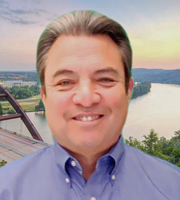CTS LMAG And CTCN Apr 20 2021 Meeting - Software Defined Radio for Amateur Radio Communication
Zoom meeting URL information will be emailed to you before the meeting.
Amateur Radio or “HAM” transceivers have typically been large rectangular boxes with a myriad switches, knobs and meters. With the advent of digital signal processing and other technology available today, the functions of yesteryear’s Ham radios can be handled digitally including the display and controls. Software Defined Radios eliminate the bulk and weight of traditional transceivers. Some SDR’s are connected to the internet and perform the receive function available to all including those without a license due to the “receive only” functionality. Some SDR transceivers are also available over the internet and allow the licensed operator to remotely control the functions of the radio from anywhere they have an internet connection. This presentation describes the concept of the Software Defined Radio and the application in HAM radio. He will show what they look like in comparison to traditional equipment and will demonstrate the functions of both a receiver as well as a transceiver. There is even a phone app that acts as an SDR for licensed users!
Date and Time
Location
Hosts
Registration
-
 Add Event to Calendar
Add Event to Calendar
Speakers
 Phil Bautista of Bull Creek Data, Senior Consultant
Phil Bautista of Bull Creek Data, Senior Consultant
Software Defined Radio (SDR) for Amateur Radio (HAM) Communication
Amateur Radio or “HAM” transceivers have typically been large rectangular boxes with a myriad switches, knobs and meters. With the advent of digital signal processing and other technology available today, the functions of yesteryear’s Ham radios can be handled digitally including the display and controls. Software Defined Radios eliminate the bulk and weight of traditional transceivers. Some SDR’s are connected to the internet and perform the receive function available to all including those without a license due to the “receive only” functionality. Some SDR transceivers are also available over the internet and allow the licensed operator to remotely control the functions of the radio from anywhere they have an internet connection. This presentation describes the concept of the Software Defined Radio and the application in HAM radio. He will show what they look like in comparison to traditional equipment and will demonstrate the functions of both a receiver as well as a transceiver. There is even a phone app that acts as an SDR for licensed users!
Biography:
Phil Bautista is a Senior IEEE Member whose Superpower is leading teams of people with disparate backgrounds to accomplish common goals. He likens it to making “Stone Soup” where you have none of the ingredients but organize often antithetic resources to align and achieve desired outcomes. While he has been an individual contributor building hardware to interface flight controls for the Apache helicopter to multi-ship simulators, written code for a bi-directional interface between the F-16 triaxial data bus to a PC, some of his most gratifying work has been leading teams to bring ideas to life such as the world’s first microprocessor controlled SCUBA diving computer. His work with NASA has provided the opportunity to learn how to pilot the Space Shuttle, develop applications that manage exemptions to work during missions, and even solve complex issues without the ability to touch a keyboard.
Founding a consulting company in 1996 and working with clients like Starbucks, Dell, and Capitol One in the private sector, Baylor College of Medicine, State University of New York (SUNY), and the University of Arizona (U of A) in the educational sector as well as the Air Force, Navy and the U.S. House of Representatives. Phil is a frequent speaker at technical conferences and volunteering his time as an executive board member for conferences. He is also an officer of the Amateur Radio Emergency Services (ARES).
Email:
Address:Austin, Texas, United States,
Agenda
The Austin Life Members Group meets monthly. Except when meeting jointly with other groups, the Life Members meet on the third Tuesday each month. Meetings usually begin with informal networking from 5:45 to 6:00 p.m., followed by presentations from 6:00 to 7:30 p.m. by experts in topics of interest to IEEE Life Members. Our meetings are open to the public. We will be conducting virtual meeting from now to June 2021.

